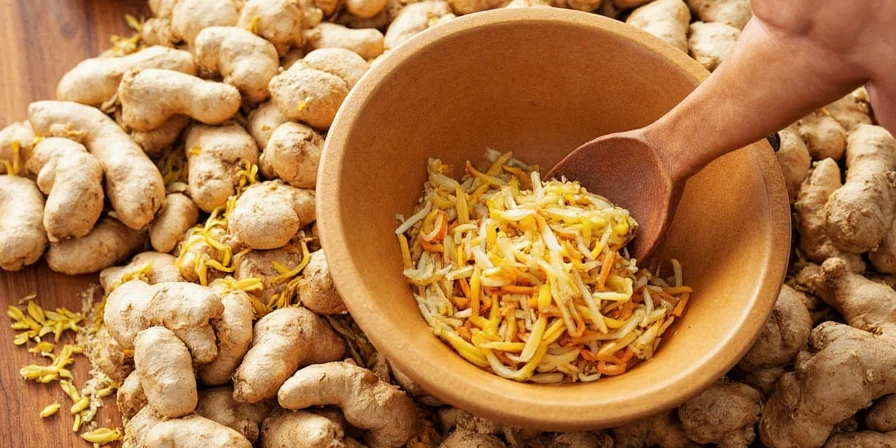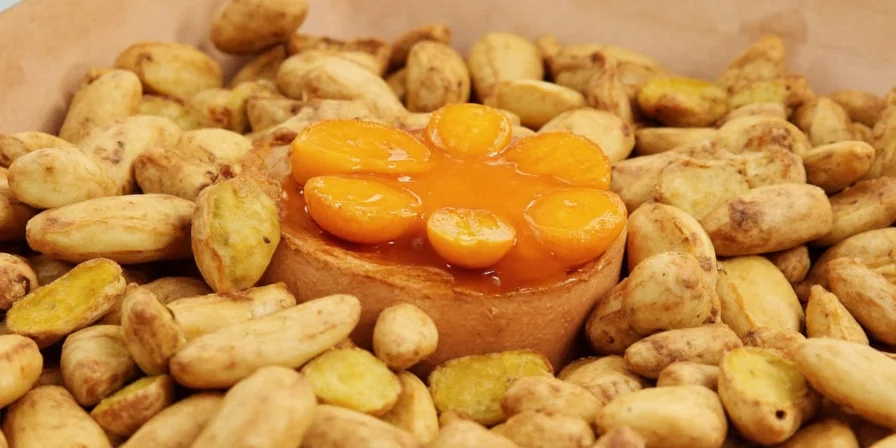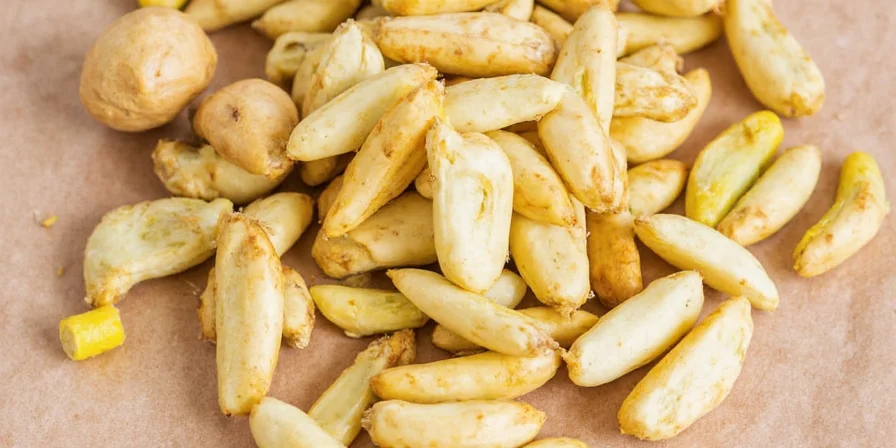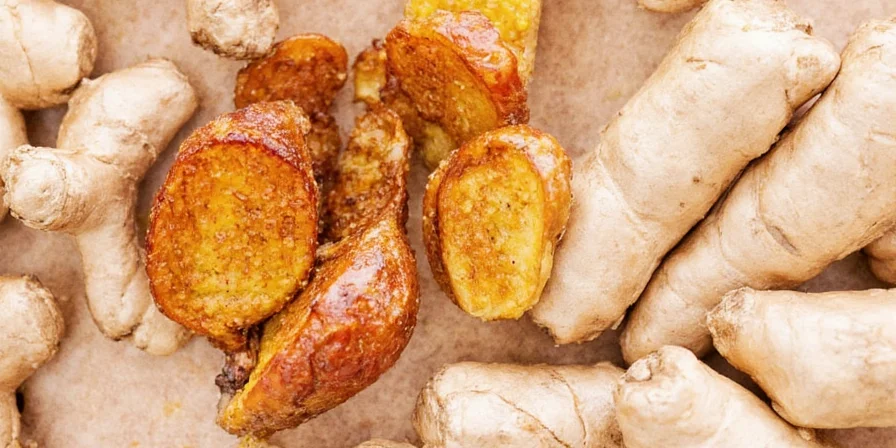If you've ever tasted Thai food—be it a fiery bowl of Tom Kha Gai or a soothing herbal broth—you've encountered the unmistakable kick of Thailand ginger. But what makes this rhizome so special, and how can you make the most of its bold, aromatic flavor in your own kitchen? Whether you're a culinary pro or just a curious home cook, this listicle will give you all the zesty tips and tricks you need to master Thailand ginger like a true spice ninja.
Table of Contents
- What is Thailand Ginger?
- Why You Should Care About Thailand Ginger
- The Top 10 Thailand Ginger Hacks You Can't Miss
- How to Choose & Store Fresh Thailand Ginger
- Common Myths About Thailand Ginger Busted
- Regional Thai Cooking Perspectives on Ginger Usage
- Spicy & Simple Recipes Using Thailand Ginger
- Final Thoughts
- Frequently Asked Questions
What Exactly Is Thailand Ginger?
When we discuss Thailand ginger, we're typically referring to specific regional varieties of Zingiber officinale cultivated in Thailand's tropical climate, not a distinct botanical species. These local cultivars feature thinner skin, higher essential oil content, and a more complex flavor profile than standard ginger varieties. Thailand's unique terroir produces rhizomes with a distinctive peppery-citrus aroma and subtle floral notes that make them indispensable in authentic Thai cooking.





Why Thailand Ginger Deserves Your Culinary Attention
Thailand ginger's unique chemical composition delivers flavor complexity that standard ginger varieties simply can't match. With higher concentrations of zingerone and shogaol compounds, it offers a cleaner heat that integrates seamlessly into dishes without overwhelming other ingredients. For home cooks seeking authentic Thai flavors without specialty market access, understanding how to maximize this common ingredient's potential makes a dramatic difference in recreating restaurant-quality dishes. Here's what sets it apart:
- Complex Flavor Profile: Citrusy top notes with warm, peppery undertones that evolve during cooking
- Enhanced Aromatic Diffusion: Volatile compounds release more readily in liquid-based dishes like soups and curries
- Texture Advantage: Tender fibers virtually dissolve in slow-cooked dishes, eliminating fibrous mouthfeel
Top 10 Thailand Ginger Hacks Every Home Cook Needs
- Slice It Thin for Maximum Impact: Use a vegetable peeler to create translucent slices that infuse flavor while remaining edible.
- Frozen Grater Technique: Freeze ginger chunks for 20 minutes before grating to preserve volatile compounds while extracting maximum juice.
- Pickled Power-Up: Quick-pickle in equal parts rice vinegar, water, and palm sugar for 30 minutes for bright, tangy garnishes.
- Infused Oils with Temperature Control: Warm oil to 140°F (60°C) before adding ginger to extract flavor without bitterness.
- Coffee Stirrer Hack: Add a 1-inch piece during brewing (remove before serving) for subtle warmth without overpowering coffee notes.
- Ginger Shots Done Right: Blend fresh juice with equal parts orange juice and a pinch of black pepper to enhance bioavailability.
- Steamed Fish Secret: Place thin slices directly on fish with a drizzle of fish sauce before steaming for delicate flavor penetration.
- Tea Time Precision: Simmer for exactly 7 minutes with lemongrass for optimal flavor extraction without bitterness.
- Marinade Timing: Add minced ginger to meat marinades 2 hours before cooking for tenderizing without mushiness.
- Sweet Treat Balance: Use half the amount called for regular ginger in baked goods to maintain flavor harmony.
How to Choose and Store Thailand Ginger Like a Pro
Identifying premium Thailand ginger requires attention to specific visual and tactile cues. Here's your market selection guide:
| Characteristic | Quality Indicators | Warning Signs |
|---|---|---|
| Skin Texture | Taut, slightly moist with visible root nodes | Deep wrinkles, dry patches, or shriveled appearance |
| Color Variation | Pinkish-rose nodes with pale yellow flesh | Dull brown spots or grey discoloration |
| Firmness Test | Resilient to pressure with slight give | Excessive hardness or soft, mushy areas |
Optimal Storage Techniques:
- Short-term: Store unpeeled in ventilated mesh bag in refrigerator's high-humidity drawer (up to 3 weeks)
- Long-term: Freeze whole pieces in vacuum-sealed bags (6-8 months without quality loss)
- Ready-to-use: Puree with neutral oil and freeze in ice cube trays for instant cooking applications
Thailand Ginger Myths—Scientifically Debunked
Let's clarify common misconceptions with evidence-based insights:
| Myth | Reality |
|---|---|
| "Thailand ginger is a different species" | All culinary gingers are Zingiber officinale—differences stem from growing conditions and cultivars |
| "Older ginger is always hotter" | Heat level depends on growing season and storage—freshly harvested wet-season ginger packs most punch |
| "Peeling removes all nutrients" | Skin contains minimal nutrients; thorough scrubbing preserves maximum beneficial compounds |
Regional Thai Culinary Perspectives on Ginger
Thailand's diverse culinary regions utilize ginger in distinctive ways that reveal fascinating cultural adaptations:
- Northern Thailand: Incorporated sparingly in kaeng hang le (Burmese-inspired pork curry) for subtle warmth that complements turmeric and ginger flower
- Central Thailand: Used generously in tom kha soups where its citrus notes balance coconut milk's richness
- Isaan (Northeastern): Minced finely in som tum dressings to cut through intense fish sauce and chili heat
- Southern Thailand: Combined with turmeric and shrimp paste in Muslim-influenced curries for complex flavor layering
This regional variation demonstrates how Thailand ginger functions as a flavor conductor rather than a dominant note, adapting to regional palates while maintaining its distinctive presence.
Authentic Thailand Ginger Recipes Simplified for Home Kitchens
These refined recipes leverage Thailand ginger's unique properties while accommodating home kitchen limitations:
- Weeknight Tom Kha Simplified: Simmer 2 cups coconut milk, 1 cup broth, 4 oz mushrooms, ½ cup shredded chicken, 3 thinly sliced kaffir lime leaves, and 3 tablespoons julienned Thailand ginger for 15 minutes. Finish with 1 tablespoon fish sauce and 1 teaspoon palm sugar.
- Ginger-Infused Stir-Fry Sauce: Whisk 3 tablespoons soy sauce, 2 tablespoons rice vinegar, 1 tablespoon honey, 1 teaspoon sesame oil, and 2 tablespoons freshly grated Thailand ginger. Toss with vegetables and protein.
- 3-Ingredient Ginger Tea: Steep 3 Thailand ginger slices and 1 lemongrass stalk in 2 cups boiling water for 10 minutes. Add honey to taste—no sugar needed.
- Ginger-Marinated Tofu: Combine ½ cup soy sauce, 3 tablespoons grated ginger, 2 minced garlic cloves, and 1 tablespoon lime juice. Marinate firm tofu for 2 hours before pan-frying.
- Ginger-Enhanced Coconut Sorbet: Blend 1 can coconut milk, ¼ cup ginger juice, 3 tablespoons agave, and juice of 1 lime. Churn according to ice cream maker instructions.
Elevate Your Cooking with Thailand Ginger Wisdom
Understanding Thailand ginger's nuanced role in Thai cuisine transforms it from a simple ingredient to a culinary passport. By recognizing its regional applications, selecting quality rhizomes, and applying precision techniques, home cooks can achieve authentic Thai flavors without specialty ingredients. The key lies in treating ginger as an aromatic foundation rather than a dominant spice—allowing its complexity to enhance rather than overwhelm your dishes.
Next time you reach for ginger, consider its journey from Thailand's tropical fields to your kitchen. A few thoughtful adjustments in selection, preparation, and application will unlock flavors that standard ginger simply cannot replicate, bringing genuine Thai culinary artistry to your everyday meals.
Frequently Asked Questions About Thailand Ginger
Can I substitute regular ginger for Thailand ginger in Thai recipes?
Yes, but with adjustments. Use 25% less regular ginger and add a squeeze of lime juice to approximate Thailand ginger's citrus notes. For best results, supplement with a pinch of white pepper to mimic its distinctive heat profile.
How can I tell if my Thailand ginger has gone bad?
Fresh Thailand ginger should spring back slightly when pressed. Discard if you notice gray discoloration, mold growth, or a sour/musty smell. Unlike regular ginger, Thailand ginger develops an unpleasant chemical odor when spoiled rather than simply becoming soft.
Why does Thailand ginger seem spicier in some dishes than others?
Thailand ginger's heat perception varies based on preparation method. Thin slicing releases more capsaicin-like compounds than grating. Acidic ingredients like tamarind or lime juice intensify perceived heat, while coconut milk and sugar moderate it. The growing season also affects potency—wet season harvests are typically hotter.
Does Thailand ginger offer unique health benefits compared to regular ginger?
Both varieties share similar bioactive compounds, but Thailand ginger's specific terpene profile may enhance certain benefits. Its higher citral content shows potential for improved respiratory support, while unique sesquiterpene ratios may offer enhanced digestive benefits. However, preparation method significantly impacts bioavailability—sliced ginger in soups shows better compound retention than boiled forms.
Can I grow Thailand ginger outside tropical climates?
Yes, with careful cultivation. Start with fresh rhizomes from Asian markets in early spring. Plant in well-draining, acidic soil with partial shade. Maintain consistent moisture (never waterlogged) and temperatures above 65°F (18°C). In non-tropical regions, grow in containers that can be moved indoors before first frost. Expect slower growth and potentially milder flavor than Thailand-grown varieties.











 浙公网安备
33010002000092号
浙公网安备
33010002000092号 浙B2-20120091-4
浙B2-20120091-4